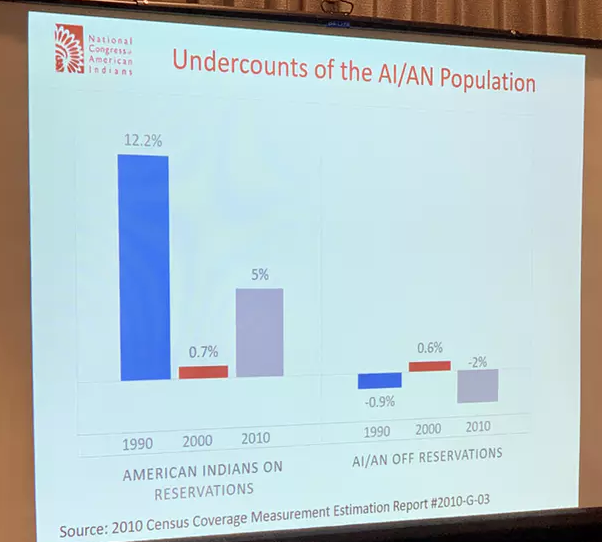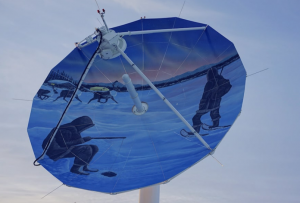Oceti Sakowin Fellows aim to help their communities
MIT announces $60,000 to first-ever Oceti Sakowin fellows
By Talli Nauman
Native Sun News Today
nativesunnews.today
CAMBRIDGE, Mass. – Six social entrepreneurs of the Oceti Sakowin will receive $10,000 each to strengthen renewable energy, food and water initiatives through the Solve Fellowships that the applicants earned in recent competition, the Massachusetts Institute of Technology announced April 25.
Fellowships culminate on Aug. 12-13, when participants are set to gather for what administrators call “a celebration of the impactful sustainability work in Indian Country.”
Slated to take place at Standing Rock, the celebration is designed as a public exposition on project progress and potential in this first-ever “Fellowship to Support Innovation in the Oceti Sakowin Community,” which is part of the 4-year-old MIT Solve marketplace program, carried out in collaboration with the MIT Media Lab.
Winners will receive “tailored support from MIT to advance renewable energy, food, and water projects,” administrators said in the announcement of a total $60,000 connected with the partnership process.
The winners are: Kimberlynn Cameron, for Sustainable Community Development on Standing Rock; Henry Red Cloud, for Bringing Energy Independence to Tribal Camps and Communities; Rose Fraser, for Medicine Root Garden Program; Joseph McNeil, for Rock Solar Community Offset Project; Chance Renville, for Thunder Valley Energy; and Phyllis Young, for Energy Efficiency/Solar for Tribal Buildings at Standing Rock.
Young and LaDonna Brave Bull Allard, as finalists in MIT’s Disobedience Awards contest earlier this year, were instrumental in attracting the technology match, according to Rachael Drew, who oversees the unprecedented grant opportunity.
Solve’s Executive Director Alex Amouyel said his team is “excited to embark on this mutual exchange with native communities,” which is “leveraging the existing talent and ingenuity of local innovators, while engaging MIT students, faculty, and staff as well as the Solve community to support their projects.”
Cameron’s project is to create a culturally appropriate home-and-garden community-building prototype on the Standing Rock Sioux Indian Reservation, using renewable energy to advance food self-sufficiency.
“Having grown up on Standing Rock, I understand the importance and need for adequate housing that is culturally-appropriate, affordable, and healthy,” said Cameron, who is a South Dakota School of Mines & Technology student.
“I also understand the current need to develop innovative business opportunities that will not only be successful, but also align with the cultural values, belief system, and traditional way of life,” she said in her project proposal.
“This project not only provides a bridge from our world to the world we see from our reservation boundaries, it also allows for utilizing renewable energy to power a greenhouse operation to provide year-round growing seasons with environmentally conscious ideals in conjunction with a business mindset, infrastructure growth and educational development, and a multifaceted solution to creating a self-sustaining, truly sovereign and independent community,” she said.Red Cloud aims to make available four types of solar equipment providing off-grid energy and heat to at least three Keystone XL Pipeline construction resistance camps and at least one Enbridge Line Three camp.
“It is impossible to tell how many additional camps will sprout up over the hundreds of miles of planned construction,” he said in his proposal. Water protectors’ camps that previously were pitched to support tribal litigation against construction “taught us a lot about the energy needs of off-grid camps,” he said.
His proposal offers mobile power stations, consisting of 5′ x 8′ trailers generating approximately one kilowatt of solar power and handcart sized units putting out several hundred watts. It provides electric lighting with a simple solar panel and LED system that comfortably fit in a 5-gallon bucket. Off-grid solar furnaces will supply up to 30 percent of a small dwelling’s heat.
“We will also provide training and work with solar champions who want to bring renewable energy applications back to their tribes,” he said. “Our goal is to utilize the camps’ unique ability to attract diverse tribal members to spread solar technology and training to many more than the 40-plus tribes we have worked with so far.”
Red Cloud has trained Native Americans to build and install renewable energy for 20 years through his Lakota Solar Enterprises and his Red Cloud Renewable Energy Center on the Pine Ridge Indian Reservation.
Fraser’s intention is to increase the availability of fresh, healthy, local produce, grown by the people of Pine Ridge and to create seasonal income for families. Her non-profit program at Kyle educates families not only how to eat healthy but how to grow healthy foods.
“Pine Ridge Reservation is a USDA-designated food dessert,” she noted in her proposal, adding, “funding continues to be a challenge, and with the change in administration, government funding opportunities are likely to be cut back severely, putting the people we serve at even greater risk.
“Our reservation’s only full grocery store has limited fresh produce and is often too expensive for many of the reservation’s residents,” she continued. “Limited food choices can lead to high rates of obesity and diabetes for our Lakota people.”
What’s more, she said, “Over 97 percent of residents live at less than U.S. federal poverty levels with unemployment at nearly 80 percent, and most annual income is under $5,000. Poverty leads to poor nutrition, which has been linked to a range of negative health outcomes.”
Her nine-month organic gardening class includes 16 weeks of classroom lessons utilizing the Mittleider gardening technique, hay bale gardening, container gardening and square foot gardening.
Lessons are tailored to the type of garden a family wishes to have. They cover soil-building and garden plans for domestic consumption or farmers markets. The program offers cooking classes for unfamiliar vegetables and preservation classes for value-added production.
McNeil’s proposal is for workforce development and production of renewable energy at Ft. Yates, North Dakota. Building solar energy plants of up to 150kw each will address the problem of affordable power for economically distressed populations within the Standing Rock Sioux Tribe.
It “will allow residents to afford a better quality of life, food, medicines, clothes, home and provide hope and inspiration for generationally depressed communities,” he said in his proposal for a business to become economically self-sustaining after the grant period.
Renville has in mind advancing the Solar Initiative at the private and federally funded Thunder Valley Community Development Corp. in Porcupine, on the Pine Ridge Indian Reservation.
His fellowship promises to result in at least three fully certified photovoltaics installers, while increasing the size of the installation team by at least 50 percent. This will allow for installation of complete PV systems on at least 14 of Thunder Valley’s 21 single-family homes, as well as its new community center and an apartment building to be completed in summer 2018.
“The overarching problem we are addressing is the persistent unavailability of resources, be they electricity, capital, housing, or food, all of which result from the United States failure to honor the Ft. Laramie Treaty of 1868, Renville said in his proposal.
“The loss of essential resources has resulted in systemic and pervasive poverty, and an unsustainable and inequitable relationship to major energy producers/distributors and the political process,” he said.
As director of Thunder Valley’s Solar Initiative, Renville emphasize that Solve funding goes for a demonstration project, part of establishing a “regenerative community” in which “we are not only leading a movement toward place-based, ecologically responsible design, we are helping families understand their relationship to the energy economy and build personal equity and agency.”
Young, as a former Standing Rock Tribal Council member and a longtime activist, proposes a massive overhaul of energy infrastructure at government-controlled buildings at Standing Rock, captained by a four-member non-profit leveraging tribal revenue for solar-based cost savings.
The cost of power to Standing Rock citizens is 33 percent more than it is in North Dakota’s capital of Bismarck, just one hour away, according to Young. “By leveraging energy efficient technology and photovoltaics, our districts stand to save millions of dollars over the coming decades – and make a powerful statement about the necessity to shift towards renewable energy,” she said in her proposal.
“In the aftermath of the Dakota Access Pipeline debacle, Standing Rock citizens can continue to lead on the importance of protecting our sacred earth. We are like an island of ecological awareness within a sea of apathy,” she said.





Comments are closed here.